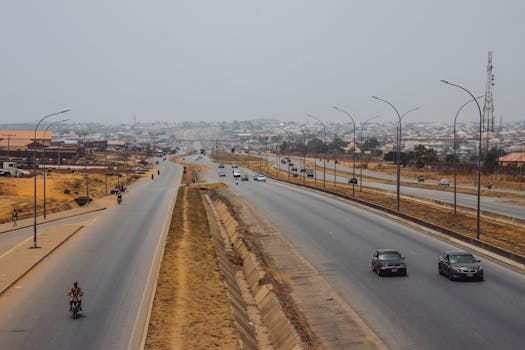Mapping the Fiber Landscape: Key Players and Projects Across Africa – Fiber Optics & Connectivity

Mapping the Fiber Landscape: Key Players and Projects Across Africa – Fiber Optics & Connectivity
Fiber Optics & Connectivity is becoming increasingly important in Africa, with the continent experiencing a surge in fiber optic infrastructure development. Numerous key players and projects are underway, aiming to improve connectivity and bridge the digital divide. This article will delve into the major initiatives and stakeholders driving fiber optics & connectivity across Africa, providing an in-depth look at the current state of the fiber landscape.
Introduction to Fiber Optics & Connectivity in Africa
Fiber optics & connectivity have become essential components of modern telecommunications, enabling fast and reliable data transmission. In Africa, the demand for fiber optics & connectivity is on the rise, driven by the growing need for internet access, mobile broadband, and digital services. To meet this demand, several key players, including governments, telecommunications companies, and infrastructure providers, are investing heavily in fiber optic infrastructure development.
The African fiber optics & connectivity market is characterized by a mix of terrestrial and submarine fiber optic cables, with several major projects underway. These initiatives aim to improve connectivity, increase internet penetration, and support economic growth. Some of the notable fiber optics & connectivity projects in Africa include the Africa Coast to Europe (ACE) submarine cable, the West Africa Cable System (WACS), and the Eastern Africa Submarine Cable System (EASSy).
Key Players in the African Fiber Optics & Connectivity Market
Several key players are driving the development of fiber optics & connectivity in Africa. These include telecommunications companies such as MTN, Vodacom, and Orange, which are investing in fiber optic infrastructure to support their network expansion and improve services. Infrastructure providers like Liquid Telecom, SEACOM, and Main One are also playing a crucial role, providing fiber optic connectivity to businesses, governments, and individuals across the continent.
In addition to private sector players, governments are also involved in the development of fiber optics & connectivity in Africa. Many governments have launched initiatives to promote fiber optic infrastructure development, such as the Kenyan government’s National Optic Fiber Backbone Infrastructure (NOFBI) project, which aims to connect all counties in the country with high-speed fiber optic cables.
Projects and Initiatives Driving Fiber Optics & Connectivity in Africa
There are several notable projects and initiatives driving fiber optics & connectivity in Africa. The Africa Coast to Europe (ACE) submarine cable, for example, spans over 17,000 kilometers, connecting 19 countries in West Africa, Europe, and Asia. The West Africa Cable System (WACS) is another significant project, providing high-speed fiber optic connectivity to 14 countries in West Africa.
The Eastern Africa Submarine Cable System (EASSy) is a 10,000-kilometer submarine cable that connects eight countries in Eastern Africa, including Kenya, Tanzania, and Mozambique. Other notable projects include the Kenyan government’s National Optic Fiber Backbone Infrastructure (NOFBI) project, the Ghanaian government’s Eastern Corridor Fiber Optic Project, and the South African government’s SaNREN (South African National Research and Education Network) project.
Conclusion and Future Outlook for Fiber Optics & Connectivity in Africa
In conclusion, the African fiber optics & connectivity landscape is rapidly evolving, with numerous key players and projects driving infrastructure development. As demand for internet access, mobile broadband, and digital services continues to grow, the need for reliable and high-speed fiber optic connectivity will become increasingly important.
Looking ahead, we can expect to see continued investment in fiber optic infrastructure, with a focus on expanding connectivity to underserved areas and improving the overall quality of services. The development of fiber optics & connectivity in Africa will play a critical role in supporting economic growth, improving access to education and healthcare, and bridging the digital divide.





